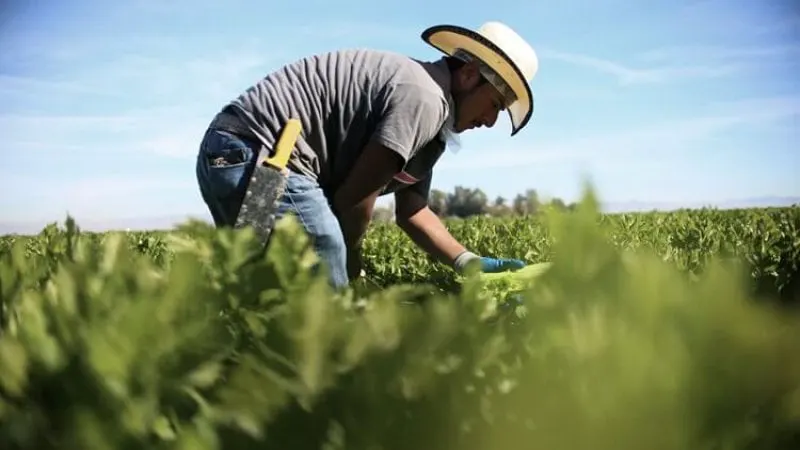Can next-generation agriculture become a climate change solution
Can next-generation agriculture become a climate change solution — rather than a carbon generator?


Carbon farming includes a variety of agricultural methods aimed at sequestering atmospheric carbon into the soil. These farming practices can increase total carbon content, improve soil water-retention capacity and reduce fertilizer use in addition to improving plant growth.
…
[Researcher Todd] Michael’s team is working to uncover how genomic differences enable plants to respond better to and exploit their environment.
A key aspect of Michael’s research is increasing plants’ suberin production. Suberin, dubbed the biopolyester of the frontier of plants, provides some of the longest-lived molecules in the soils. In plants, suberins form gas and watertight barriers that prevent water and cellular products from leaching from roots into the soil.
By getting plants to make bigger root systems, improved plants would create more suberin to store more CO2. As the roots go deeper, there is less oxygen in the soil. This means there is less decomposition resulting in the CO2 being stored longer. By making a bigger root system containing more suberin and a larger fraction of the root system buried deeper underground, plants could move a larger amount of carbon into the soil and keep it there longer.
Read the original post
The GLP featured this article to reflect the diversity of news, opinion and analysis. The viewpoint is the author’s own. The GLP’s goal is to stimulate constructive discourse on challenging science issues.

 | Videos | More... |

Video: Nuclear energy will destroy us? Global warming is an existential threat? Chemicals are massacring bees? Donate to the Green Industrial Complex!
 | Bees & Pollinators | More... |

GLP podcast: Science journalism is a mess. Here’s how to fix it

Mosquito massacre: Can we safely tackle malaria with a CRISPR gene drive?

Are we facing an ‘Insect Apocalypse’ caused by ‘intensive, industrial’ farming and agricultural chemicals? The media say yes; Science says ‘no’
 | Infographics | More... |

Infographic: Global regulatory and health research agencies on whether glyphosate causes cancer
 | GMO FAQs | More... |

Why is there controversy over GMO foods but not GMO drugs?

How are GMOs labeled around the world?

How does genetic engineering differ from conventional breeding?
 | GLP Profiles | More... |

Alex Jones: Right-wing conspiracy theorist stokes fear of GMOs, pesticides to sell ‘health supplements’


 Four ways to strip carbon out of agriculture and limit farming’s climate impacts
Four ways to strip carbon out of agriculture and limit farming’s climate impacts Confronting the elephant in the human biodiversity room — the explosive issue of IQ
Confronting the elephant in the human biodiversity room — the explosive issue of IQ The lingering pandemic: The chronic toll of untreatable long COVID
The lingering pandemic: The chronic toll of untreatable long COVID Trust issues: What happens when therapists use ChatGPT?
Trust issues: What happens when therapists use ChatGPT? Genghis Khan has over 16 million descendants today — but he’s not alone. 10 other men have massive genetic legacies
Genghis Khan has over 16 million descendants today — but he’s not alone. 10 other men have massive genetic legacies Fighting deforestation with CO2: Biotechnology breakthrough creates sustainable palm oil alternative for cosmetics
Fighting deforestation with CO2: Biotechnology breakthrough creates sustainable palm oil alternative for cosmetics Viewpoint — Fact checking MAHA mythmakers: How wellness influencers and RFK, Jr. undermine American science and health
Viewpoint — Fact checking MAHA mythmakers: How wellness influencers and RFK, Jr. undermine American science and health Viewpoint: Video — Big Solar is gobbling up productive agricultural land and hurting farmers yet providing little energy or sustainabilty gains
Viewpoint: Video — Big Solar is gobbling up productive agricultural land and hurting farmers yet providing little energy or sustainabilty gains California, Washington, Oregon forge immunization alliance to safeguard vaccine access against federal undermining
California, Washington, Oregon forge immunization alliance to safeguard vaccine access against federal undermining Is tilapia a human-made freak that we should avoid — or an evolutionary rockstar?
Is tilapia a human-made freak that we should avoid — or an evolutionary rockstar?
